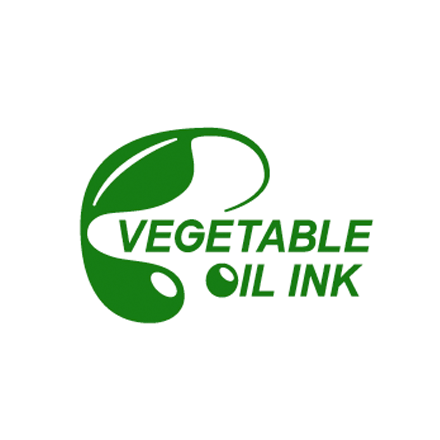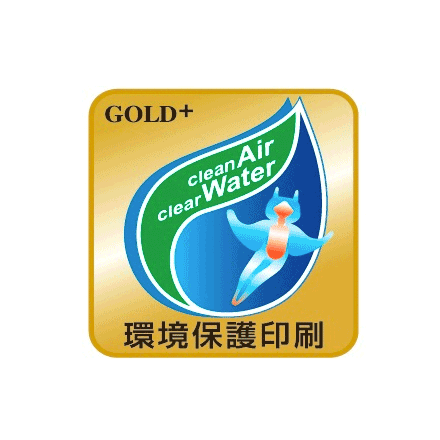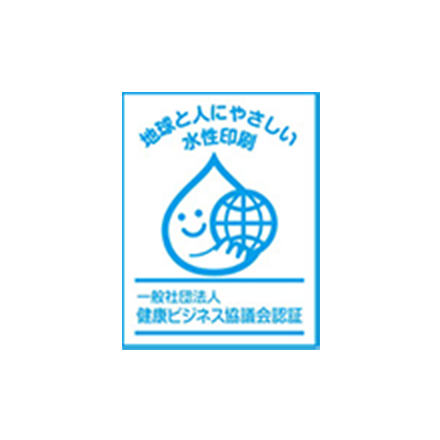What is the environmental mark?
An environmental mark is a mark that communicates to consumers, through packaging, advertising, etc., products and initiatives that help preserve the environment and reduce environmental impact.
Environmental labels are expected to help consumers choose products with less environmental impact, and currently there are various forms of environmental labels such as text, marks, and advertisements.
When consumers choose products and services, if they use new information called "environmental labels" from a perspective other than quality, design, and price, a new force will work in the market and make corporate activities and society more environmentally friendly. You can expect the effect of changing to a more considerate type.
There are various types of environmental marks, including legal marks required by law, voluntary marks voluntarily established by industry organizations, and marks that are examined and approved by mark management organizations.
In the printing field, we will introduce what kind of marks there are.

ink green mark
A mark that indicates the percentage of biomass in ink as an indicator.
The Ink Green Mark is an environmental mark that can be given to environmentally friendly printing inks based on the biomass percentage in printing inks, provided that it complies with NL regulations.
This mark has established certification standards that classify ink into three ranks depending on the degree of environmental friendliness of the ink composition.
However, since it is difficult to include biomass components in UV-curable inks, paper recyclability and energy saving are evaluated as indicators.
| Target items, etc. | printing inks (sheet-fed offset ink, rotary offset ink, newspaper ink (non-heat-off wheel), UV-curable inks) |
|---|---|
| Environmental impact to focus on | With most of our offset inks already compliant with the Vegetable Oil Ink Mark and Eco Mark, we are focusing on encouraging the development of even more environmentally friendly products in the future. |
| Name of operating entity and its overview | printing inks Industry Association |
| Year of operation | 2015年 |

Eco mark
A mark given to products and services that are environmentally friendly.
The Eco Mark is an environmental mark that can be given to various products (products and services) that have been recognized as having a low environmental impact throughout their entire lifecycle, from production to disposal, and are recognized as contributing to environmental conservation.
This mark is Japan's only third-party certified Type I environmental labeling system in accordance with the International Organization for Standardization's standards ISO14020 and ISO14024.
| Target items etc. | A variety of products, including not only "goods" but also "services" without being limited to a specific type. (Stationery, uniforms, building materials, civil engineering products, engine oil, supermarkets, car sharing, hotels, etc.) |
|---|---|
| Environmental impact to focus on | For each product type, we consider the environmental impact items throughout the entire life cycle, from resource extraction to disposal and recycling, and focus on the environmental impact that is considered important. |
| Name of operating entity and its overview | Japan Environment Association (Public Interest Incorporated Foundation) |
| Year of operation | 1989年 |

Vegetable oil ink
Marks that can be displayed on printing inks using vegetable oil
The Vegetable Oil Ink Mark is an environmental mark that can be given to vegetable oil inks that meet the standards for vegetable oil content in printing inks containing vegetable oil.
Vegetable oils include reproducible plant-derived oils such as soybean oil, linseed oil, tung oil, coconut oil, and palm oil, as well as recycled oils made from recycled waste cooking oils based on these oils.
It is also possible to attach the mark to printed matter printed with the applicable ink.
| Target items, etc. | printing inks (Newspaper off-wheel ink, non-heat off-wheel ink, sheet-fed ink, business form ink, heat-set off-wheel ink, UV-curable inks, flexographic ink) |
|---|---|
| Environmental impact to focus on | The focus is on the depletion of fossil fuels (renewable raw materials). |
| Name of operating entity and its overview | printing inks Industry Association |
| Year of operation | 2009年 |

Non-VOC ink mark
A mark attached to printed matter printed with ink that does not contain petroleum-based volatile organic compounds (VOC).
The Non-VOC Ink Mark is an environmental mark that can be given to printing inks that contain less than 1% of high-boiling petroleum solvents in their constituent components by replacing them with vegetable oils, etc.
This ink is more environmentally friendly than vegetable oil ink.
It is also possible to attach the mark to printed matter printed with the applicable ink.
| Target items etc. | printing inks (offset ink, UV-curable inks, etc.) |
|---|---|
| Environmental impact to focus on | The focus is on the depletion of fossil fuels (renewable raw materials). |
| Name of operating entity and its overview | artience Co., Ltd. |
| Year of operation | 2000年 |

NL mark
An environmental mark that can be given to printing inks that do not use chemical substances that are inappropriate for environmental impact, occupational safety, and human health.
Targeted chemical substances are listed on the NL List (Negative List).
The NL regulation is a voluntary regulation unique to printing inks Industry Association, and products that comply with the NL regulation comply with the RoHS Directive.
| Target items etc. | printing inks (offset inks, newspaper inks, UV-curable inks, gravure inks, flexographic inks, screen inks, etc.) and related products |
|---|---|
| Environmental impact to focus on | We focus on hazardous substances that are emitted into the air, water, and soil during the manufacturing stage, and those that affect the ecosystem during the use, consumption, and disposal stages. |
| Name of operating entity and its overview | printing inks Industry Association |
| Year of operation | 1973年 |

GP mark
A mark that indicates that all printing materials, manufacturing processes, and efforts of the printing company are environmentally friendly.
The Green Printing (GP) certification system based on the printing industry's voluntary environmental standards has three systems: the "GP Factory Certification System," the "GP Materials and Equipment Certification System," and the "GP Product Certification System."
The GP mark is an environmental mark that can be given to printed products that are manufactured by GP-certified factories under the GP Product Certification System and whose paper, ink, binding and surface processing methods meet environmental standards.
While conventional environmental marks for printed products target paper, ink, or part of the manufacturing process, the GP mark is a comprehensive environmentally friendly mark that covers everything from materials to processes.
| Target items etc. | Offset printing products (books, magazines, catalogs, posters, flyers, reports, office printed materials, etc.), digital printing products, sticker printing products |
|---|---|
| Environmental impact to focus on | We comprehensively focus on the environmental impact items of each printed product, from design and manufacturing to recycling. |
| Name of operating entity and its overview | Japan Printing Industry Federation |
| Year of operation | 2006年 |

Biomass
A mark displayed on products that use biomass and have been certified by a third-party organization.
The Biomass Mark is a mark that can be given to environmental products that utilize biological resources (biomass) and comply with quality and related laws, standards, standards, etc.
To visualize environmental effects, we set the lower limit of biomass content to 10% and display the biomass percentage (dry weight ratio) contained in certified products.
| Target items etc. | From plastics to printing inks, detergents, textile products, biofuels, road paving agents, etc. |
|---|---|
| Environmental impact to focus on | The dry weight percentage of the biomass raw material used is defined as the "biomass content" and is a priority item, and attention is also paid to whether the quality and safety of the products meet relevant laws, regulations, standards, etc., as befits an environmental product. |
| Name of operating entity and its overview | Japan Organic Resources Association |
| Year of operation | 2006年 |

Clione mark
The "Environmental Protection Printing Mark" is attached to printed materials that are printed using environmentally friendly processes.
The Clione mark achieves "zero emissions" by not emitting VOCs or harmful waste fluids from the offset printing plate to the printing process.It contributes to environmental protection and can be applied to each and every piece of printed matter with consideration for the environment. It's Mark.
This mark is the nickname for the ``Environmental Protection Printing Mark,'' a symbol of the printing industry that promotes the provision of printed products that contribute to reducing the printing industry's environmental impact.
| Target items etc. | Offset printed matter (mainly books, magazines, catalogs, posters, flyers, reports, office printed matter, etc.) |
|---|---|
| Environmental impact to focus on | We focus on keeping air and water clean during the printing production process. |
| Name of operating entity and its overview | Environmental Protection Printing Promotion Council (abbreviation: E3PA) |
| Year of operation | 2005年 |

Rice mark
Environmental mark that can be attached to printed materials using rice ink that utilizes rice bran oil
Soybean oil inks used in printing inks have a large transportation mileage (CO2 emissions) because soybean oil is transported from North America, and there were concerns that food could be industrialized.
However, since rice ink is refined from domestically produced rice bran, the transportation mileage is low and it is also suitable for local production for local consumption.
The Rice Ink Mark System is a system that reduces transportation mileage, secures the original food of rice, makes effective use of rice bran, and promotes the use of biomass.
Marks can also be attached to printed materials printed with the relevant ink.
| Target items etc. | printing inks (sheet-fed offset ink, rotary offset ink, UV-curable inks, gravure ink, flexographic ink, etc.) |
|---|---|
| Environmental impact to focus on | The focus is on reducing transportation miles, promoting local production for local consumption, securing food, and reducing waste. |
| Name of operating entity and its overview | Rice Ink Consortium |
| Year of operation | 2009年 |

water-based printing product certification mark
A mark that certifies products printed with 100% water-based ink.
What is water-based printing product certification mark? Packaging materials used in product packaging and printed matter such as leaflets
This is a system that certifies products printed with 100% water-based ink.
| Target items etc. | printing inks (water-based based gravure ink, water-based flexo ink, etc.) |
|---|---|
| Environmental impact to focus on | Through the certification system, we aim to improve the packaging printing work environment, maintain the health of workers, and promote corporate social contribution activities for the environment, such as reducing emissions of volatile organic compounds into the atmosphere. |
| Name of operating entity and its overview | Health Business Council General Incorporated Association |
| Year of operation | 2015年 |
